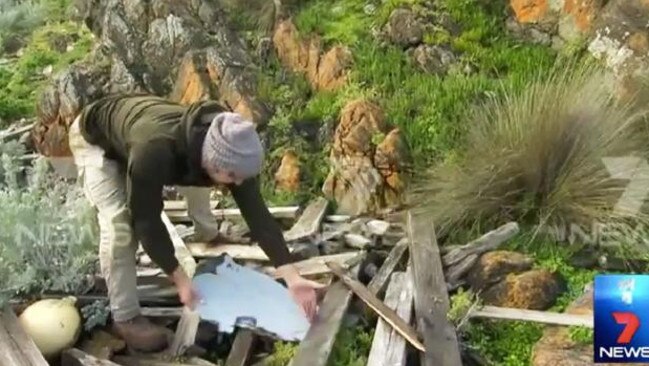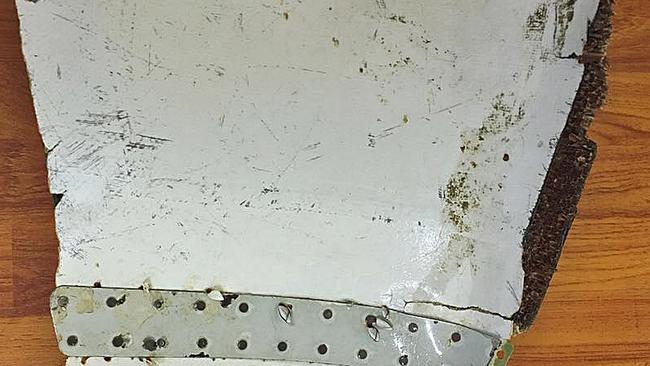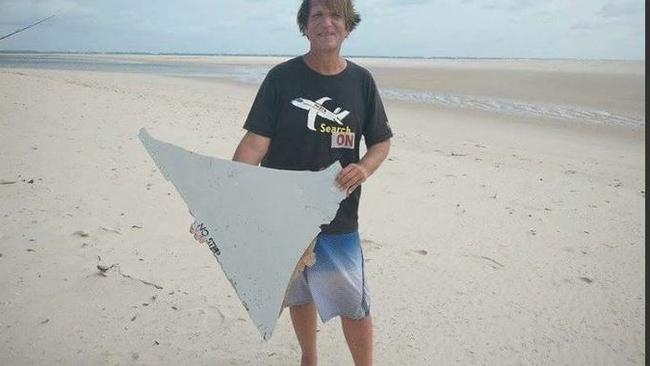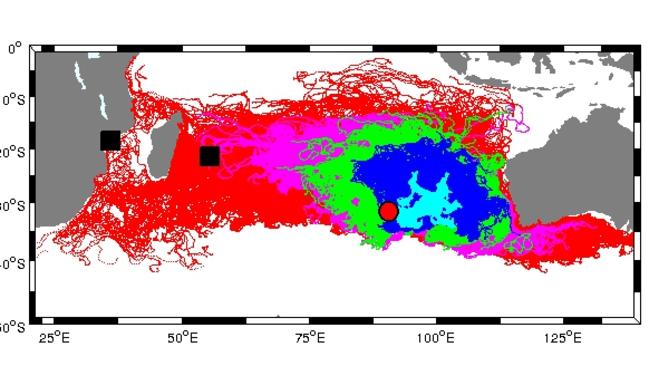Kangaroo Island debris find points to search area certainty for MH370
MORE plane parts — including a seat — have washed up in the hunt for MH370. Their discovery could have a significant impact on the search.
PLANE debris found on Kangaroo Island off South Australia could certainly have come from MH370 if the plane did indeed crash in the southern Indian Ocean.
The wing part was discovered on Thursday afternoon by a man searching for driftwood on the island which is 13.5 kilometres from the Fleurieu Peninsula in South Australia.
Although the shoebox-sized piece is clearly from an aircraft — with the words “NO STEP” printed on it — authorities would not say yesterday if the part was from a Boeing 777.

A spokesman for the Australian Transport Safety Bureau said Malaysia had been notified of the find, which was in the hands of local authorities.
“We’re co-ordinating with the local authority to have it transported and examined in Canberra,” he said.
To date, five items found on beaches and islands in the western Indian Ocean have been confirmed as from MH370, which disappeared after leaving Kuala Lumpur on March 8, 2014.

They include a flaperon found on Reunion Island, part of an engine cowling, a section of interior cabin, a segment of horizontal stabiliser and a flap track fairing.
US blogger and lawyer Blaine Gibson who previously found debris from MH370 in Mozambique, has found another three items in Madagascar.
Malaysia is making arrangements for the items to be transported and examined, probably in Australia.
One of the items resembles part of a seat based on images Mr Gibson has sent to investigators.
Has Blaine Gibson found more of MH370 Madagascar? It's possible. Not confirmed by experts yet.... pic.twitter.com/yXGjk7e8Wv
— Richard Westcott (@BBCwestcott) June 9, 2016

University of Western Australia oceanographer Charitha Pattiaratchi said the discoveries were all providing more pieces of the complex puzzle surrounding MH370’s disappearance.
Drift modelling prepared by his team based on the plane coming down in the southern Indian Ocean showed it was likely debris would appear on the coast of West and South Australia after two years.

“So far every item found has been consistent with drift modelling based on the plane going down along the seventh arc in the southern Indian Ocean,” said Professor Pattiaratchi.
“If this latest debris on Kangaroo Island is confirmed, it will go beyond doubt that the aircraft went down in the area in which they are searching,”
He said had the aircraft crashed further north, closer to the Maldives, there would be no chance of debris washing up on Kangaroo Island.
“It gives us confidence we are looking in the right place,” Prof Pattiaratchi said.
In the past week, only one of the three search vessels working in the southern Indian Ocean has been able to deploy its sensitive sonar equipment to scour the seabed.
Huge waves of up to 18 metres have restricted the Fugro Equator to bathymetric work and Chinese ship Dong Hai Jiu 101 remains on standby to the north of the search zone.
More than 105,000 square kilometres have now been searched since October 2014, leaving less than 15,000 square kilometres to go before the operation is considered complete.
The governments of Australia, Malaysia and China have agreed not to extend the search without credible new information about the plane’s final resting place.




